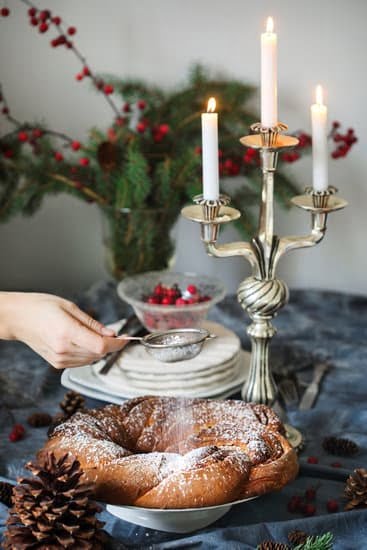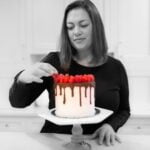Are you wondering how to apply fondant decorations to a cake? Fondant is a versatile and popular choice for decorating cakes due to its smooth, pliable texture and ability to hold intricate designs. Whether you’re a beginner or an experienced baker looking to improve your fondant skills, this article will guide you through the process of applying fondant decorations to your cake.
Fondant decorations can elevate the look of any cake, from simple birthday cakes to elaborate wedding cakes. In this comprehensive guide, we’ll cover everything you need to know about working with fondant, from choosing the right type for your cake to troubleshooting common mistakes. By the end of this article, you’ll be equipped with the knowledge and techniques needed to create stunning fondant decorations for your next baking project.
Before we dive into the specifics of applying fondant decorations, it’s important to understand the different types of fondant and how they can impact your cake decorating experience. Additionally, we’ll explore how to properly prepare your cake for fondant application and provide tips for rolling and cutting fondant with precision. Get ready to take your cake decorating skills to the next level as we delve into the art of applying fondant decorations.
Types of Fondant Decorations
Fondant decorations come in various shapes, sizes, and designs, adding a touch of elegance and creativity to any cake. Whether you’re looking to create flowers, figures, or other intricate designs, there are different types of fondant decorations that can help you achieve the desired look for your cake.
Hand-Cut Fondant Decorations
One type of fondant decoration involves hand-cutting the fondant into various shapes and designs. This method allows for complete customization and creativity, as you can create any design you desire using a sharp knife or fondant cutter. Hand-cut fondant decorations are perfect for adding unique and personalized touches to your cake.
Fondant Molds and Cutters
Fondant molds and cutters are another popular choice for creating decorative elements for cakes. These tools come in a variety of shapes and sizes, allowing you to easily create uniform designs such as stars, hearts, or geometric patterns. Using molds and cutters can save time and effort when making multiple decorations for a single cake.
Edible Images
For those looking for a quick and easy way to add intricate designs to their cakes, edible images made from fondant sheets are an excellent option. Edible images are printed onto a thin sheet of fondant using food-grade ink, allowing for detailed photographs or elaborate designs to be transferred directly onto the cake’s surface.
No matter which type of fondant decoration you choose to use on your cake, each option offers its own unique benefits in terms of creativity, efficiency, and visual impact. In the following sections, we will explore how to select the right type of fondant for your specific needs as well as prepare and apply these decorations to your cake with ease.
Additionally – in this section – we’ll provide some guidance on choosing the right type of fondant for your cake so that you can achieve the best results with your decorations.
Choosing the Right Fondant for Your Cake
When it comes to choosing the right fondant for your cake, there are a few factors to consider. The type of fondant you use can greatly affect the outcome of your decorations and the overall look of your cake. Here are some tips for choosing the right fondant for your next cake decorating project:
1. Rolled Fondant: This type of fondant is the most commonly used for cake decorating. It has a smooth texture and can be rolled out thin for covering cakes or creating decorations. Rolled fondant is available in a variety of colors and flavors, making it versatile for different cake designs.
2. Poured Fondant: Poured fondant is more liquid in form and is often used for filling or icing cakes. It can also be poured over petit fours or other small treats for a smooth, glossy finish.
3. Modeling Chocolate: Although not technically fondant, modeling chocolate can be used to create similar decorations on cakes. It has a firmer texture than traditional fondant and can be molded into intricate shapes and designs.
When deciding on the right type of fondant for your cake, consider the design you have in mind and the climate you will be working in. Some types of fondant may hold up better in warmer temperatures, while others may be more suitable for intricate details and delicate designs.
Additionally, keep in mind that homemade fondant is also an option if you prefer to customize the flavor and color to your liking. With these options in mind, you can now move on to preparing your cake for the application of fondant decorations.
Preparing the Cake for Fondant Decorations
Smooth and Level Surface
Before applying fondant decorations to a cake, it is crucial to ensure that the surface of the cake is smooth and level. Any bumps or unevenness can cause wrinkles or bulges in the fondant. To achieve a smooth surface, use a layer of buttercream or ganache to fill in any gaps or imperfections on the cake.
Chilling the Cake
After frosting the cake, it is recommended to chill it in the refrigerator for at least 30 minutes. Chilling not only sets the frosting but also makes it easier to handle when applying fondant. A chilled cake provides a firm base for fondant decorations and reduces the risk of smudging or tearing.
Applying a Crumb Coat
To prevent crumbs from mixing with the fondant, apply a thin layer of frosting known as a crumb coat. This initial layer seals in any loose crumbs and provides a clean base for applying fondant decorations. Use a spatula to smooth out any excess frosting before proceeding with the fondant application.
By following these steps, you can effectively prepare your cake for fondant decorations and create a flawless canvas for your designs.
Now that we have prepared our cake correctly, let’s move on to rolling and cutting Fondant in the next section.
Rolling and Cutting Fondant
When it comes to applying fondant decorations to a cake, one of the key steps is rolling and cutting the fondant. This process requires precision and attention to detail in order to achieve a flawless and professional-looking result. Here’s a step-by-step guide on how to roll and cut fondant for your cake decorations:
1. Prepare your work surface: Start by dusting your work surface with powdered sugar or cornstarch to prevent the fondant from sticking. You can also use a silicone mat specifically designed for working with fondant.
2. Knead the fondant: Before rolling out the fondant, knead it with your hands to make it more pliable. If the fondant feels too dry, you can add a small amount of vegetable shortening or glycerin to soften it.
3. Roll out the fondant: Use a rolling pin to roll out the fondant into an even sheet of the desired thickness. Keep rotating the fondant and lifting it occasionally to ensure that it doesn’t stick to the work surface.
4. Cut out your shapes: Once you have rolled out the fondant, use cookie cutters, pastry wheels, or sharp knives to cut out the shapes needed for your decorations.
5. Transfer the decorations: Carefully lift each fondant decoration using an offset spatula or your hands and place them onto the cake as desired.
By following these steps, you can ensure that your fondant decorations are neatly rolled and cut, resulting in a beautifully adorned cake that will impress anyone who sees (and tastes) it.
Remember, practice makes perfect when it comes to working with fondant, so don’t be discouraged if your first attempt isn’t flawless.
Applying Fondant Decorations to the Cake
Fondant decorations can add a creative and professional touch to any cake. Whether you are making a birthday cake, wedding cake, or just want to impress your family and friends, fondant decorations are a great way to showcase your baking skills. In this section, we will discuss the step-by-step process of applying fondant decorations to a cake, so you can achieve a beautiful and polished final product.
Before applying fondant decorations to your cake, it is important to ensure that the surface of the cake is smooth and free of crumbs. To do this, you can apply a thin layer of buttercream or ganache as a base before laying the fondant. This will help the fondant adhere to the cake and create a clean canvas for decorating.
Once the cake is prepared, it’s time to roll out the fondant. Sprinkle some powdered sugar or cornstarch on your work surface to prevent sticking, then roll out the fondant into a thin, even layer using a rolling pin.
After rolling out the fondant, use cookie cutters or fondant cutters in various shapes and sizes to cut out decorative elements such as flowers, leaves, or other designs. Then carefully transfer these cutouts onto your prepared cake using appropriate tools like spatulas or even your hands being careful not to overwork them and lose their shape.
| Step | Description |
|---|---|
| 1 | Prepare the smooth surface of the cake with buttercream or ganache as a base. |
| 2 | Roll out fondant into thin, even layer on a powdered sugar or cornstarch-dusted work surface. |
| 3 | Cut out decorative elements from rolled-out fondants using cookie cutters/fondants cutters and carefully transfer onto prepared cakes. |
Fixing Mistakes and Troubleshooting
Sometimes, applying fondant decorations to a cake can be a bit tricky, and mistakes may occur. But don’t worry, there are some tips and tricks you can use to fix these mistakes and troubleshoot any issues that may arise. One common issue is air bubbles forming under the fondant. To fix this, simply prick the bubble with a pin and smooth it out with your fingers.
Another common problem is the fondant tearing while you are applying it to the cake. If this happens, you can gently patch up the tear by using a small amount of water on your finger to smooth over the tear and blend it back together. If there are any rough edges or uneven spots, you can use a fondant smoother or your hands to gently smooth them out.
If your fondant decorations are not sticking properly to the cake, you can use a small amount of water as “glue” to adhere them better. Simply brush a tiny bit of water onto the back of the decoration before placing it onto the cake. This will help it stick securely in place without leaving any visible marks or residue.
| Issue | Solution |
|---|---|
| Air bubbles under fondant | Prick bubble with pin and smooth out with fingers |
| Tearing fondant | Use small amount of water to patch up tear |
| Fondant not sticking | Brush back of decoration with small amount of water for better adhesion |
Finishing Touches and Decorating Tips
In conclusion, applying fondant decorations to a cake can add a beautiful and professional-looking finish to your baked creations. From simple cut-out shapes to intricate designs, fondant offers endless possibilities for decorating cakes for any occasion. By understanding the different types of fondant, properly preparing your cake, and mastering the techniques for applying and fixing mistakes with fondant decorations, you can create stunning and impressive cakes that will surely wow your friends and family.
One of the most important aspects of applying fondant decorations to a cake is choosing the right type of fondant for your specific needs. Whether you opt for traditional rolled fondant, marshmallow fondant, or pre-colored fondant, selecting the best option will ensure that your decorations turn out as desired. Additionally, properly preparing and covering your cake with a thin layer of buttercream or ganache will provide the ideal base for applying the fondant decorations.
When it comes to rolling and cutting the fondant, it’s essential to work with precision and care. Taking your time to roll out the fondant evenly and using sharp tools to cut out shapes will result in clean and polished decorations.
And as you apply the fondant to your cake, remember to smooth out any air bubbles or wrinkles for a seamless finish. With these techniques in mind, you’ll be well on your way to mastering how to apply fondant decorations to a cake like a pro.
Frequently Asked Questions
How Do You Stick Fondant Decorations to a Cake?
Fondant decorations can be easily stuck to a cake by using either water or edible glue. Simply brush a small amount of water or glue onto the back of the fondant decoration and gently press it onto the cake.
Will Fondant Decorations Melt on Buttercream?
Fondant decorations will not melt on buttercream as long as the buttercream has set and is not overly soft or wet. However, if the buttercream is too soft, the fondant may begin to soften and lose its shape.
How Do You Use Fondant on a Cake for Beginners?
For beginners, using fondant on a cake can seem daunting, but with practice, it becomes easier. Start by rolling out the fondant evenly, then carefully lift it onto the cake and smooth it out to remove any air bubbles. Gradually work your way around the cake until it’s fully covered.

Welcome to our cake decorating blog! My name is Destiny Flores, and I am the proud owner of a cake decorating business named Cake Karma. Our mission is to provide delicious, beautiful cakes for all occasions. We specialize in creating custom cakes that are tailored specifically to each customer’s individual needs and tastes.





